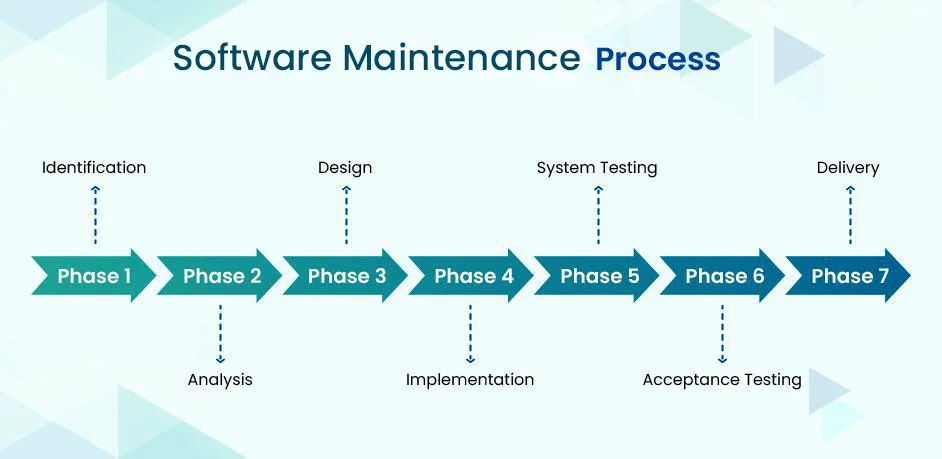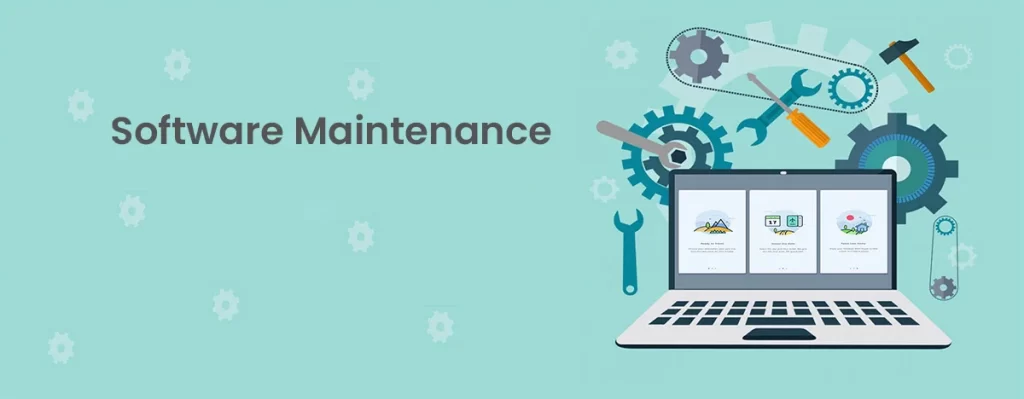Software Maintenance Service: Ensuring Optimal Performance and Reliability
Welcome to our comprehensive guide on software maintenance service. In today’s digital landscape, businesses heavily rely on software applications to streamline their operations, enhance productivity, and deliver exceptional user experiences. However, to ensure optimal performance and reliability, software requires regular maintenance and professional services. In this article, we will explore the importance of software maintenance and services, discuss best practices, and provide insights into how businesses can leverage these offerings to maximize the value of their software investments.

What is software maintenance?
Software maintenance refers to the process of managing, updating, and enhancing software applications after their initial development and deployment. It encompasses activities aimed at preserving and improving the functionality, performance, and security of software systems throughout their lifecycle. Software maintenance involves bug fixing, performance optimization, feature enhancements, security updates, and compatibility improvements.
The significance of regular software maintenance
Regular software maintenance is crucial for several reasons:
- Bug Fixing and Issue Resolution: Software applications may encounter bugs, glitches, or compatibility issues over time. Regular maintenance allows developers to identify and address these issues promptly, ensuring the software operates smoothly and without disruptions.
- Performance Optimization: As software systems handle increasing amounts of data and user interactions, performance optimization becomes essential. Through maintenance activities such as code refactoring and database optimization, developers can enhance the speed, efficiency, and scalability of software applications.
- Security Updates: Cyber threats are ever-evolving, and software vulnerabilities can leave businesses susceptible to attacks. Regular software maintenance includes applying security patches and updates to protect against potential threats and ensure data integrity.
- Compatibility and Interoperability: Operating systems, hardware configurations, and external dependencies evolve over time. By regularly maintaining software, businesses can address compatibility issues, ensuring seamless integration with other systems and devices.
- Feature Enhancements: User requirements and market demands change, necessitating the addition of new features or functionalities to software applications. Regular maintenance enables businesses to adapt their software to evolving needs, ensuring it remains competitive and relevant.
Common types of software maintenance
Software maintenance can be categorized into four main types:
- Corrective Maintenance: This type of maintenance involves fixing bugs, errors, and issues identified in the software during its operation. Corrective maintenance aims to restore the software to its intended functionality.
- Adaptive Maintenance: Adaptive maintenance focuses on modifying the software to accommodate changes in the operating environment, such as updates to hardware, operating systems, or third-party integrations.
- Perfective Maintenance: Perfective maintenance involves enhancing the software’s existing features and functionalities to improve performance, user experience, and efficiency. It aims to optimize the software’s capabilities and align it with changing user needs.
- Preventive Maintenance: Preventive maintenance aims to proactively identify and address potential issues before they impact the software’s performance. It includes activities such as code reviews, security audits, and performance monitoring.

Benefits of outsourcing software maintenance
Outsourcing software maintenance services can offer several benefits to businesses:
- Access to Expertise: By outsourcing software maintenance to specialized service providers, businesses can tap into the expertise of professionals experienced in maintaining and optimizing software applications.
- Cost Efficiency: Outsourcing software maintenance can be more cost-effective than hiring an in-house team dedicated to this function. Service providers often offer flexible pricing models that align with business needs.
- Focus on Core Competencies: Outsourcing software maintenance allows businesses to focus on their core competencies while leaving the technical aspects to experts. It frees up internal resources to concentrate on strategic initiatives.
- Enhanced Scalability: Service providers can scale their resources and capabilities based on the evolving needs of the software and the business. This flexibility ensures that the software can adapt to growth and changing requirements.
How to choose the right software maintenance services provider
When selecting a software maintenance services provider, consider the following factors:
- Experience and Expertise: Assess the provider’s track record, experience with similar software applications, and their expertise in different maintenance types and technologies.
- Service Offerings: Evaluate the range of services the provider offers, ensuring they align with your specific maintenance requirements. Consider whether they provide both corrective and preventive maintenance, as well as future scalability.
- Reputation and References: Research the provider’s reputation in the industry and seek references or case studies from their existing clients. This will give you insights into their professionalism, reliability, and the quality of their services.
- Communication and Support: Effective communication is vital when partnering with a maintenance services provider. Ensure they have clear lines of communication, provide timely updates, and offer responsive support.
- Security Measures: Software maintenance involves accessing and handling sensitive data. Ensure the provider has robust security measures in place to protect your data and comply with relevant regulations.

Conclusion
Software maintenance service play a crucial role in ensuring the optimal performance, reliability, and security of software applications. By investing in regular maintenance and partnering with the right service providers, businesses can maximize the value of their software investments, stay ahead of evolving needs, and provide exceptional user experiences.
When choosing software maintenance service consider the provider’s expertise, service offerings, reputation, and security measures. Regular maintenance, including bug fixing, performance optimization improvements, and security updates, will help your software remain efficient and secure. Outsourcing software maintenance can provide access to specialized expertise, cost-efficiency, and scalability.
Remember to evaluate the frequency of maintenance based on your specific software and business requirements. Regular updates and preventive maintenance will extend the lifespan of your software, improve user experience, and ensure compatibility with evolving technologies.
If you’re ready to leverage software maintenance and services to optimize your software’s performance, reliability, and security, consider partnering with a reputable provider. Take into account their experience, service offerings, communication channels, and security measures. By prioritizing software maintenance, you can unlock the full potential of your software and drive your business forward. GCTL INFOSYS is one of the prominent Software maintenance Service Provider Company in Bangladesh.
Frequently Asked Questions (FAQ)
Q: What is the cost of software maintenance services?
A: The cost of software maintenance services varies depending on factors such as the complexity of the software, the required maintenance activities, and the provider’s pricing structure. It is best to consult with service providers and discuss your specific needs to obtain accurate cost estimates.
Q: How often should software maintenance be performed?
A: The frequency of software maintenance depends on the specific software, its usage, and the business requirements. Generally, regular maintenance should be performed to address bugs, security updates, and compatibility issues. Preventive maintenance can be scheduled periodically to ensure proactive optimization and avoid potential disruptions.
Q: Can software maintenance be performed remotely?
A: Yes, many software maintenance tasks can be performed remotely, allowing service providers to offer their expertise regardless of location. Remote maintenance often provides convenience and flexibility while ensuring the software remains up-to-date and optimized.
Q: Is it necessary to update software regularly?
A: Regular software updates are essential to address security vulnerabilities, improve performance, and add new features. Neglecting software updates can leave your system exposed to potential threats and hinder its functionality and compatibility with other systems.
Q: Can software maintenance extend the lifespan of software?
A: Yes, proper maintenance can extend the lifespan of software by preserving its performance, addressing issues promptly, and adapting it to changing requirements. Regular maintenance helps ensure the software remains functional and relevant for an extended period.
Q: Can software maintenance improve user experience?
A: Absolutely! By optimizing performance, addressing bugs, and enhancing features, software maintenance contributes to a better user experience. It ensures smooth operation, reduces downtime, and enhances the overall usability of the software.



